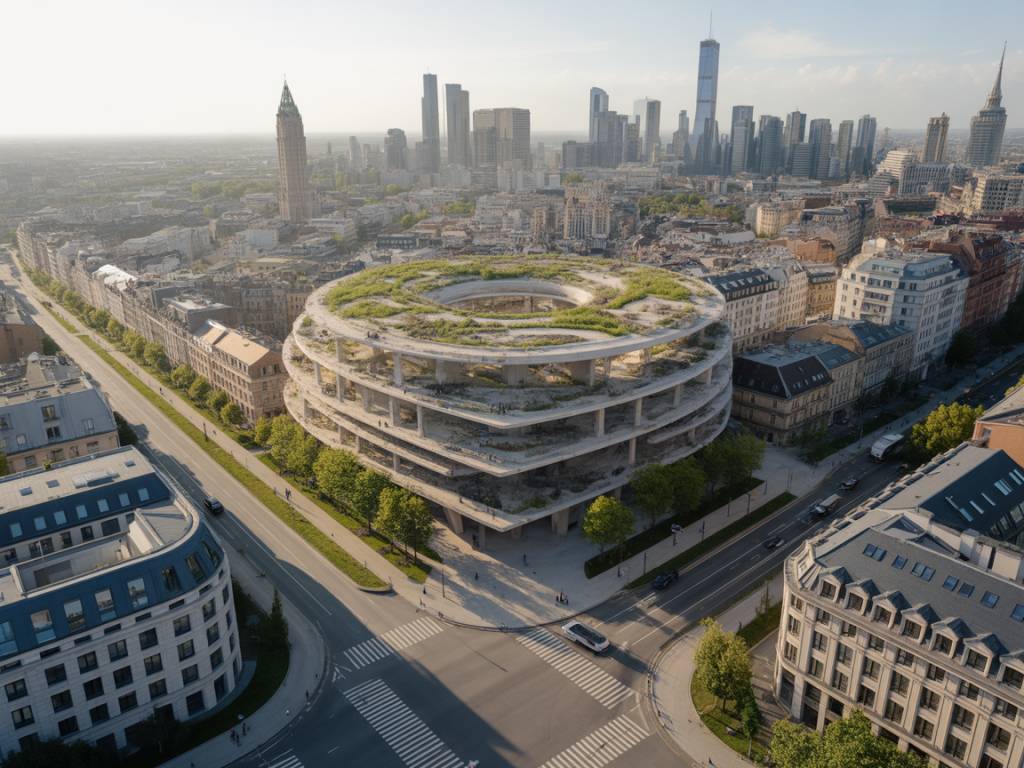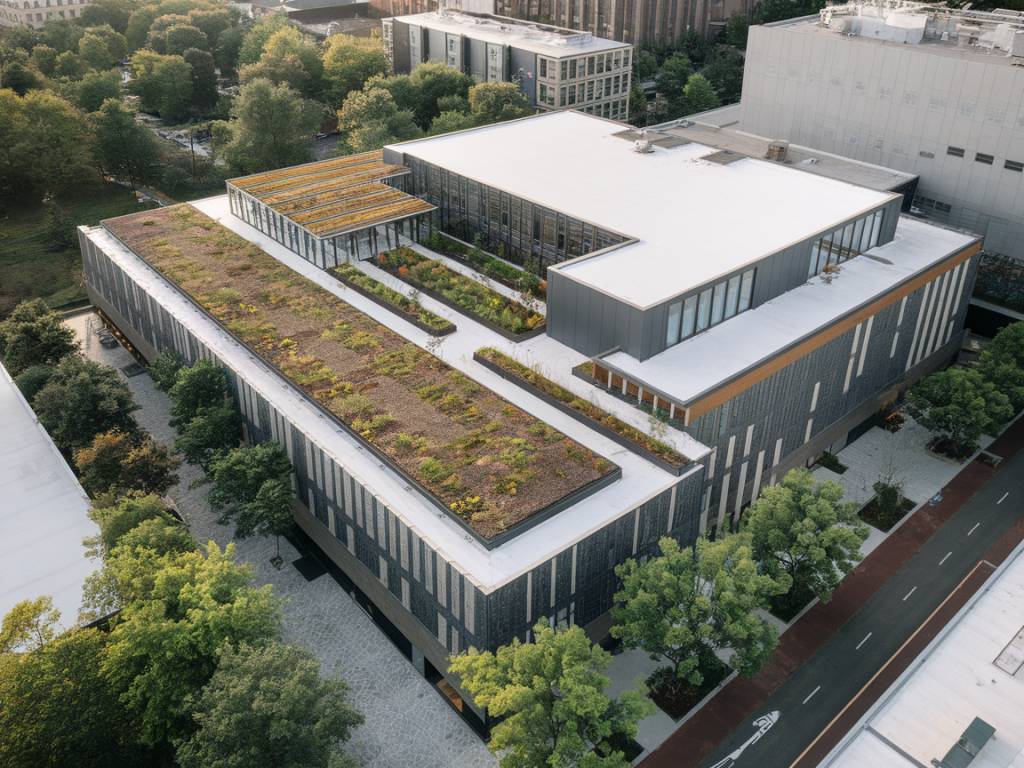Understanding Circular Construction in the Urban Context
Circular construction represents a transformative approach to urban development by emphasizing the reuse, recycling, and regeneration of materials across the entire lifecycle of a building. Unlike traditional linear construction models—which typically follow a “take, make, dispose” paradigm—circular construction aims to minimize waste, extend the life of building materials, and reduce the environmental footprint of urban environments.
As cities face mounting challenges such as climate change, resource scarcity, and rapid urbanization, the need for sustainable building practices has never been more critical. Circular construction aligns with broader concepts of the circular economy and sustainable urban planning. The process considers the entire value chain, from design and material extraction to construction, use, and eventual deconstruction or repurposing.
Sustainable Building Materials as the Foundation
One of the foundational aspects of circular construction is the use of sustainable and recyclable building materials. These materials not only lessen the environmental burden but also enhance the long-term performance and adaptability of urban infrastructures.
Key types of sustainable materials in circular construction include:
- Recycled Concrete Aggregate (RCA): Sourced from demolished concrete structures, RCA can replace natural aggregates, reducing the need for virgin raw materials and limiting landfill waste.
- Cross-Laminated Timber (CLT): A renewable alternative to steel and concrete, CLT sequesters carbon and offers high strength-to-weight ratios for structural applications.
- Rammed Earth and Hempcrete: Composed of locally sourced natural materials, these options provide insulation and thermal mass while being biodegradable and non-toxic.
- Recycled Plastics and Glass: These materials are increasingly repurposed for insulation, cladding, and even structural components, offering a second life to what would otherwise be waste.
Designing for Disassembly and Reuse
A core principle of circular construction is designing buildings with their eventual disassembly and reuse in mind. This practice enables future adaptability and ensures that building materials do not end up in landfills at the end of their initial lifecycle.
Modular construction techniques are gaining traction, allowing components to be assembled and disassembled with minimal damage. Designers are increasingly using mechanical fixings over adhesives, making it easier to deconstruct elements without compromising their integrity. Building components such as steel frames, timber panels, and façade systems can often be reused in new construction projects, reducing demand for raw materials and lowering overall emissions.
The Economic Impacts of Circular Construction
While sustainable construction is often associated with higher upfront costs, the circular model offers long-term economic benefits for urban developers, municipalities, and residents alike. The reuse of materials lowers material procurement costs and reduces the overall expense of waste management and landfill operations.
Additionally, circular construction practices foster job creation in areas such as material recovery, building renovation, and deconstruction. They also promote local supply chains, which can mitigate risks from global supply disruptions. Over time, buildings following circular principles often enjoy reduced operating costs through improved energy efficiency and resource optimization.
Policy and Regulatory Support
Governments and urban planning authorities play a pivotal role in accelerating the adoption of circular construction. Regulatory frameworks that support green building certifications, waste reduction mandates, and zero-emission targets provide incentives for developers to shift toward more sustainable practices.
Many cities around the world are integrating circularity into building codes and urban development strategies. For example, Amsterdam has implemented a « Circular 2020-2025 Strategy » that includes ambitious targets for reusing construction materials. Similarly, the European Union’s Circular Economy Action Plan emphasizes life-cycle thinking in infrastructure policy and supports eco-design requirements.
Digital Innovation and Smart Urban Planning
Technology serves as an enabler of circular construction, offering tools for better planning, tracking, and analysis of materials. Building Information Modeling (BIM) is instrumental in designing structures that can be disassembled and rebuilt with precise documentation of each component’s material, origin, and potential reuse.
Digital material passports are another innovation, capturing data about the chemicals, performance, and lifespan of materials used in buildings. This data increases transparency and facilitates material recovery during renovations or demolitions. Smart cities also rely on advanced analytics to optimize energy use and lifecycle cost management, reinforcing the value of circular approaches.
Circular Construction in Practice: Global Case Studies
Several pioneering projects around the world demonstrate the viability and benefits of circular construction in urban contexts.
- The Edge in Amsterdam: Known for its smart and sustainable design, this commercial building integrates reused materials, modular components, and energy-efficient systems. It serves as a model for circular office architecture.
- Materials House by Arup: This prototype building showcases how existing structures can be reassembled with 100% reusable components, highlighting modularity and material innovation.
- Reversible Building Design (Belgium): Led by the EU-funded BAMB project, this initiative promotes buildings that can be adapted and reused with minimal waste generation throughout multiple use cycles.
Challenges and Opportunities Ahead
Despite its promise, circular construction faces challenges that include limited market awareness, higher initial design complexity, and difficulties in sourcing quality recycled materials. Standardization of certifications and access to secondary materials markets remain hurdles for broader adoption.
However, as sustainability becomes an increasingly important aspect of urban development, the market for circular construction is expected to grow significantly. Greater collaboration between architects, urban planners, manufacturers, and policymakers will be essential to scale circular practices. Continued innovation in materials science, coupled with digital technologies, will further reduce barriers and enhance the viability of circular models in dense urban settings.
As cities strive for carbon neutrality, resilience, and quality of life for inhabitants, circular construction offers a compelling framework. By redefining how materials are sourced, used, and reintroduced into the urban environment, it enables a more resource-efficient and sustainable approach to development—one that aligns with both ecological and economic imperatives.




